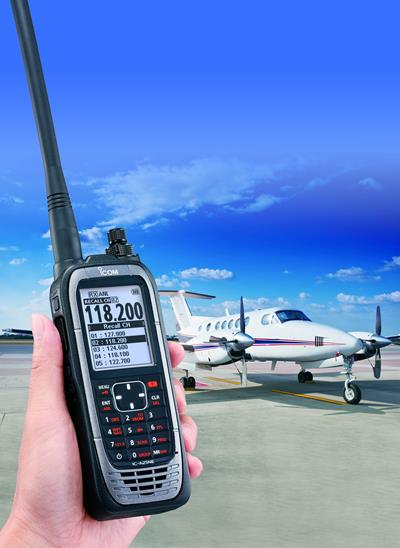Everything you need to know about Airband radios
Airband or avionic radios are primarily used by pilots and Air Traffic Control as a means of two way communication and navigation. If you already have an aircraft you probably already know how important an Airband radio is. Airband radios use VHF frequencies and channels, different to those channels that are used on the ground as they are specifically set aside for use in avionics environments. Typically between 108 and 137 MHz. Airband radios are divided into COM for voice communication and NAV for navigation. The NAV channels are still in use for VOR (VHF Omni Directional Radio Range) even though GPS is now widely used. A VOR is a type of short-range radio navigation system for aircraft, enabling aircraft with a receiving unit to determine their position and stay on course by receiving radio signals transmitted by a network of fixed ground radio beacons. There are about 3,000 VOR stations worldwide. Airband radios also include an emergency frequency at 121.5 MHz known as the International Air Distress (IAD) also known as the ‘guard' frequency. On Icom radios this is accessed by a single button which will send out a distress signal.What types of Airband Radio are available?

From 1 January 2018 all aircraft operating in airspace that requires the carriage of a radio must have 8.33 kHz-compatible equipment. More details about these changes can be found in our article 'The Impact of 8.33 kHz channel spacing for the Aviation Radio User'.
Licencing of Airband Radios
The Flight Radio Telephony Operator's Licence is the most common licence and it is normally granted as part of the training a pilot goes through for their private pilot’s licence (PPL). Glider pilots operating on nominated glider frequencies are exempt from the requirement to hold an operators certificate as long as they are operating outside of controlled frequencies. Student pilots are also exempt whilst they are under the control of an instructor. The licence depends on how and where you are using your radio. An aircraft radio licence will be required if you are using fixed or permanently installed equipment in an aircraft. If you only use a VHF portable radio in multiple aircraft you can apply for a transportable licence. If you have a portable radio which is used for one aircraft only it should be licenced as an Aircraft Radio. If you are using radio equipment to speak to aircraft from the ground you will need to apply for an aeronautical ground station licence. You must also obtain an Air Navigation Order approval, and the application form for this doubles as the application for the approval.Further Aircraft Radio Requirements

• The radio installation is approved by the Civil Aviation Authority Approved Maintenance Organisation;
• The installation and use of the radio equipment is covered by a Wireless Telegraphy Act Radio Licence issued by the CAA on behalf of the Office of Communications;
• The user of the equipment holds a Flight Radiotelephony Operators Licence issued by the Civil Aviation Authority. Article 139 of The Air Navigation order 2016 enables a balloonist or glider pilot to use an Airband radio without holding a Flight Radiotelephony Operators Licence (FRTOL). This exemption is in place as long as the balloonist or glider pilot doesn't communicate by radio with any air traffic control unit, flight information unit, or air/ground communications service unit. Further information about the latest regulations can be found by visiting Aviation Law in the UK on the CAA website.
Airband Radio Etiquette
Aeronautical radio messages must be limited to those concerning flight safety or flight regularity. Public correspondence and messages relating to air carrier/company business communications and passenger service/convenience are not permitted. For further informationIf you have any questions about any of Icom’s airband radio solutions and where to buy them either visit the airband section of our website or contact our team on 01227 741741 or via email at sales@icomuk.co.uk.

